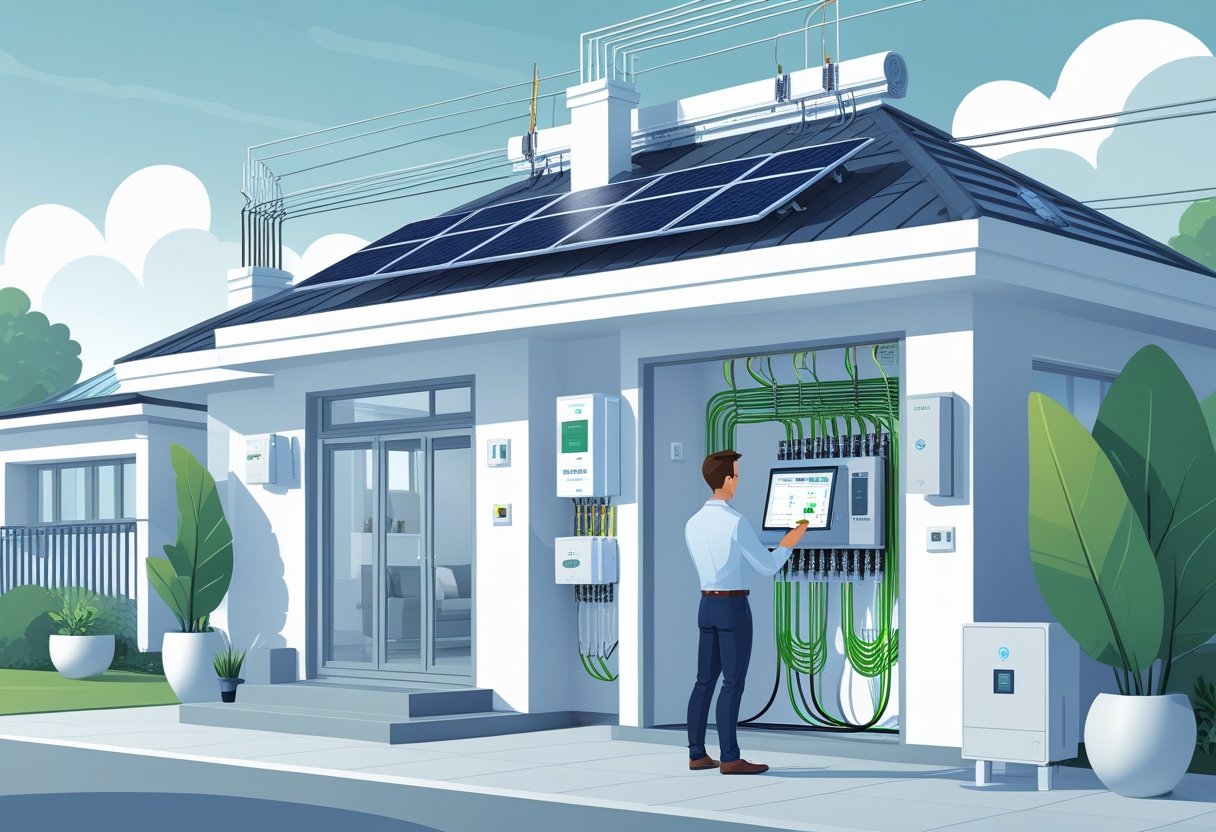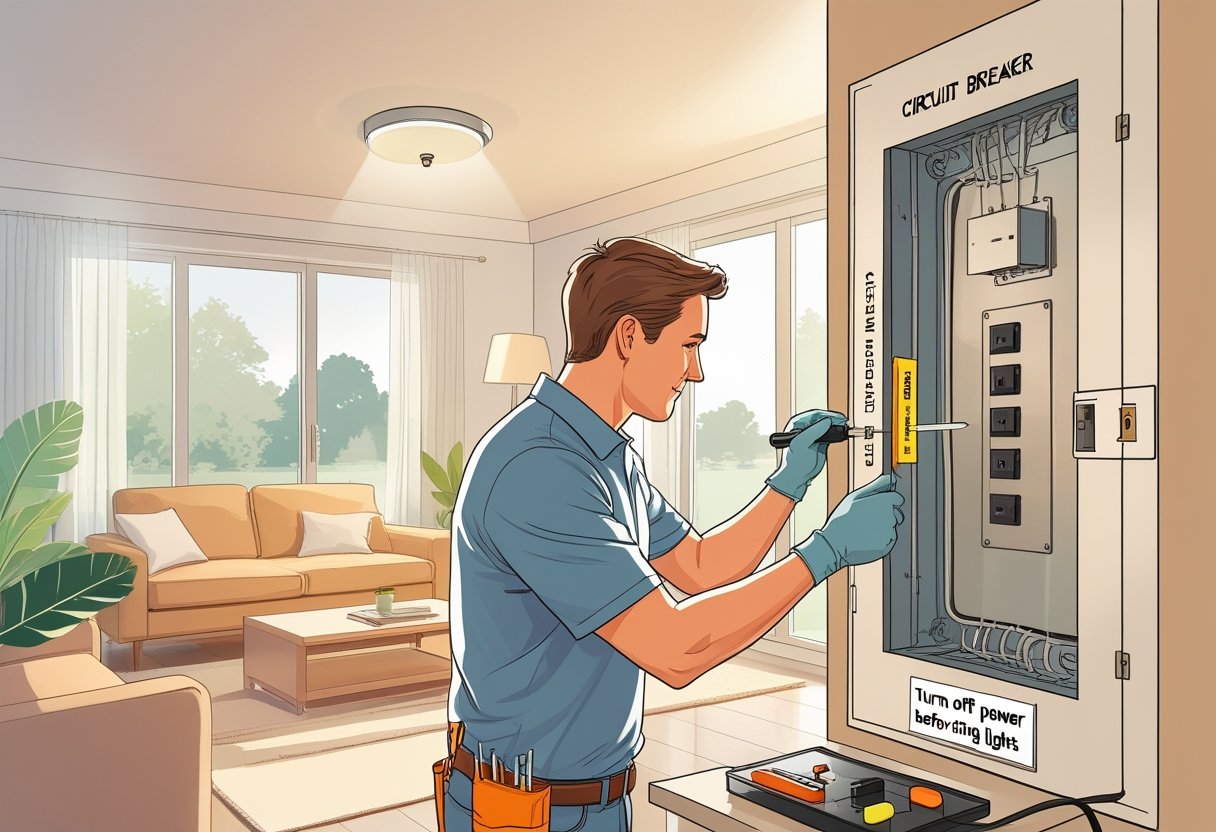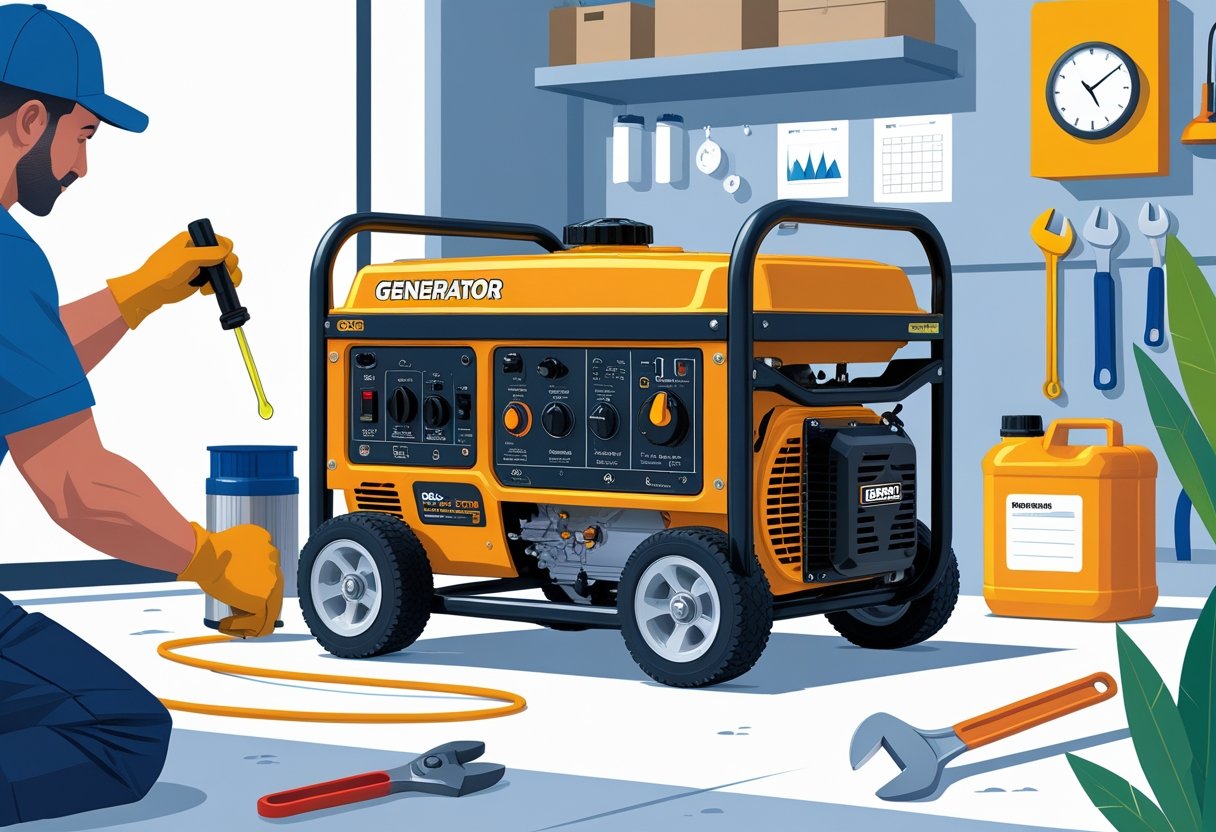Thinking about installing an EV charger at home? The most important thing to check before installation is whether your home's electrical system can safely support the charger you want to use. Skipping this step could lead to expensive upgrades later or safety risks for your family. You’ll also need to think about permits, picking the right charging unit, and finding the best spot to install it.
Honestly, choosing a licensed professional makes everything easier—especially someone who’s upfront about pricing and can get the job done quickly. At AAA Electrical Services, our certified electricians work with homeowners in Sacramento and the surrounding area to smooth out the process. We put safety first, always keeping your family in mind.
Site Assessment Essentials
Before you put in an EV charger, take a good look at your power supply, electrical setup, possible charger locations, and how practical and safe the setup will be. It’s worth doing a bit of homework to dodge headaches, delays, or extra costs.
Evaluate Power Supply Capacity
Your home's electrical system has to handle the extra load of an EV charger. Most need a 240-volt circuit, and sometimes your current setup just isn’t enough.
Check your main electrical panel’s capacity—it’s measured in amps. If your panel is already near its limit, adding a charger could trip breakers or cause other issues. Have a licensed electrician from AAA Electrical Services test your system and suggest upgrades if you need them.
Some chargers pull more power than others, so double-check your charger’s specs against your panel’s capacity. You don’t want surprises once everything’s installed.
Inspect Existing Electrical Infrastructure
Take a look at your wiring, breakers, and outlets. Older homes often have outdated parts that just can’t keep up with modern chargers. Bad wiring or old breakers? They can cause hazards or just make the charger unreliable.
See if your panel can handle more breakers or if it’s time to upgrade. Check for any wear, corrosion, or damage in the wiring. Honestly, it’s best to call in a pro for this. Catching problems early can save you money and hassle.
Determine Charger Location
Where you put your charger really affects convenience and installation cost. Try to install it near your usual parking spot, ideally within 25 feet of the electrical panel to keep wiring costs down.
Think about weather, lighting, and available space. A covered spot protects the charger from rain and sun. You also want easy access—no tripping over cords or squeezing past obstacles.
If you plan out the charger’s location in advance, your electrician can prep the site and your daily charging routine will be way smoother.
Consider Accessibility and Safety
Make sure you can get to the charger easily every day. Leave enough room to open your car doors and plug or unplug safely.
Check for any local rules about accessibility or safety. Commercial properties have stricter rules, but some neighborhoods have guidelines too. Getting the right permits and inspections helps you meet codes and avoids headaches with insurance or resale down the line.
When you hire AAA Electrical Services, you get licensed experts who focus on safety and give you clear advice.
Local Codes and Permits
Before you install an EV charger, you’ll need to figure out the rules in your area. These cover how the charger gets installed, what permits you need, and sometimes where the charger can go. Sticking to these rules keeps you out of trouble and your home safe.
Understand Regulatory Requirements
Local rules for EV charger installation can vary a ton depending on where you live. They usually cover wiring, grounding, and how the charger connects to your panel. Some places want special inspections or certain materials to meet safety standards.
Your electrician should know the codes for Sacramento and nearby areas. Following them keeps your home and family protected from electrical risks.
Obtain Required Permits
You’ll probably need a permit before you start. Permits show your project meets safety and local regulations. Usually, you submit plans and sometimes there’s an inspection after.
Let your electrician handle permits—it’s less stress for you. AAA Electrical Services manages permits so your installation goes smoothly.
Review Zoning Restrictions
Zoning laws can limit where you put equipment on your property. Some zones have rules about outdoor chargers or limit the size and placement of new gear.
Check with your local zoning office before you start. It’s a pain to move a charger after installation, so better to know the rules upfront.
Charger Compatibility Considerations
Before you install an EV charger, make sure it works with your car and fits your daily charging needs. You’ll want to check the type of charger connection and how much power it delivers.
Verify Vehicle Charger Compatibility
Your EV probably uses a specific charging plug. Most cars in the U.S. use the SAE J1772 connector for Level 1 and Level 2 charging, but brands like Tesla have their own. Make sure your charger’s plug matches, or get the right adapter.
Also, check your car’s onboard charger limits. If your car only handles Level 1 charging, a Level 2 charger won’t speed things up. Knowing your EV model helps you pick the right charger.
Determine Charging Speed Needs
Charging speed depends on the charger’s power output, measured in kilowatts (kW). Level 1 chargers use 120V and add about 2-5 miles of range per hour. Level 2 chargers use 240V and can add 10-60 miles per hour, depending on their rating.
Think about your daily driving. If you drive a lot or need to recharge quickly, Level 2 is probably best. If you only drive short distances and can charge overnight, Level 1 might do the trick. Just keep your home’s electrical capacity in mind—higher-power chargers might need panel upgrades.
For help with compatibility and safe installation around Sacramento, AAA Electrical Services offers trusted, safety-focused work with clear pricing.
Professional Consultation and Installation
Working with experts makes planning your EV charger installation way less stressful. The right pro will make sure your charger’s installed safely, meets local codes, and fits your home’s electrical system.
Consult a Licensed Electrician
Always go with a licensed electrician for your EV charger. They know the safety codes and can take care of permits and inspections. This keeps your family and home safe.
Licensed electricians will check if your panel needs an upgrade for a Level 2 charger or higher. They’ll also make sure your home’s wiring and breakers are up to the task, which helps prevent outages or damage.
AAA Electrical Services has certified electricians who offer same-day service in Sacramento and nearby. Their team focuses on safety and cleans up after the job.
Evaluate Installer Credentials
When choosing someone to install your charger, look at their credentials. Find electricians who specialize in EV chargers and have good reviews. Experience counts—they’ll know local rules and common hiccups.
Ask if they’re licensed, insured, and background-checked. It’s just smart. And get clear pricing upfront.
AAA Electrical Services offers flat-rate pricing and is known for honest, friendly service. They keep parts in their vans for quick fixes, so you’re not left waiting.
Safety and Protection Devices
Before you install an EV charger, check your home’s electrical safety. You’ll want to know your circuits are protected and that the wiring is grounded. Think about surge protection too—power spikes can fry expensive gear.
Review Grounding and Circuit Protection
Grounding sends excess electricity safely into the earth, which helps avoid shocks or fires. When you put in an EV charger, make sure your home’s grounding system is solid. Your panel should have proper circuit breakers or fuses to prevent overloads.
A dedicated circuit for your charger is a must. It stops interference with other devices and lowers fire risk. If your panel needs an upgrade, AAA Electrical Services can handle it. They offer fast, same-day service with certified techs who care about your home. Always use the right size breaker for your charger’s power.
Assess Surge Protection Options
Surge protection shields your charger and home appliances from voltage spikes—think storms or electrical faults. These spikes can wreck expensive equipment.
A surge protector near your panel adds extra protection. Some chargers have built-in surge protection too. Combining both is smart.
If you want real peace of mind, AAA Electrical Services can inspect for surge risks and install the right protection. Their upfront pricing and quick fixes make it easy.
Cost and Incentives
Knowing what you'll pay—and where you can save—makes planning your EV charger installation a lot easier. Costs vary, but there are programs that can lower your expenses. Understanding both parts below gives you a clear picture before you start.
Estimate Installation Costs
Installing an EV charger at home typically costs between $546 and $2,750. The price depends on the charger type and your home’s electrical system. If your panel needs an upgrade, that’s extra.
Labor, permits, and extra wiring all add up. Level 2 chargers, which are faster, usually cost more. Getting a flat-rate quote from a licensed company helps you avoid surprises.
AAA Electrical Services offers upfront pricing and same-day service in Sacramento and nearby. Their techs focus on safety and leave your home tidy.
Research Available Incentives and Rebates
Many local, state, and utility programs offer rebates or tax credits to help with EV charger installation costs. Sacramento often has special deals to lower your price.
Check with your utility company and local government websites for current offers. Incentives can cover a good chunk of the cost, including electric panel upgrades.
AAA Electrical Services can guide you through the process so you don’t leave money on the table. They focus on honest, safety-first work designed for your family.
Futureproofing and Expansion Planning
When you install an EV charger, it’s smart to think ahead. Consider adding more chargers or choosing features that make your system smarter and more efficient. Planning now keeps your setup reliable and safe as your needs change.
Plan for Additional Chargers
Thinking about adding more electric vehicles in the future? It makes sense to get your electrical system ready now. Upgrading the subpanel gives you the headroom for more chargers later, so you won’t have to worry about tripping breakers or stressing out your wiring.
Chat with a licensed electrician early on to see if your current setup can take on the extra load. Honestly, it’s usually simpler (and less expensive) to run the wiring and add breakers during the first upgrade, instead of coming back later. AAA Electrical Services can help you figure out what fits your family’s needs and keeps everything safe.
Consider Smart Charger Features
Smart EV chargers do a lot more than just plug in your car. They let you schedule charging times, keep tabs on your energy use, and even control things remotely—pretty handy for managing electricity and maybe saving a few bucks by charging at off-peak hours.
A lot of these chargers come with safety controls to prevent overloading. Picking one with these features can give you peace of mind. When you’re planning, ask your electrician which smart chargers will actually work with your home and your routine.
Aesthetic and Convenience Factors
Let’s be honest—no one wants a clunky, awkward charger in the middle of their garage or driveway. You want it to look tidy, work smoothly, and stand up to the weather. Small details here can make charging every day a whole lot easier.
Evaluate Cable Management Solutions
Cables get tangled and messy fast if you ignore them. It’s worth looking for ways to keep your charging cord neat and out of the way. Wall-mounted reels or retractable holders are pretty popular—they save space and help prevent trips and falls.
A tidy cable setup just makes your garage or driveway look better, and makes plugging in less of a chore. Make sure the cable actually reaches your car without forcing you to stretch or contort.
Ask your electrician for advice on cable management that fits your space. AAA Electrical Services can help you pick something that works with your layout and keeps things safe and hidden.
Account for Weather Protection
Your charger’s probably going outside or in the garage, so it needs to handle rain, sun, snow, and dust. Look for a weatherproof rating like IP65 or above—this means it can stand up to water spray and dirt without giving up.
Try to mount the charger somewhere with some shade, or get a protective cover if you can. This helps it last longer and work well year-round.
Don’t forget the cable and plugs—they should be up for wet conditions too. Weatherproofing helps you avoid electrical issues and keeps everyone safe. It’s really best to have a pro install it with safety in mind.
Frequently Asked Questions
Before you install an EV charger at home, you’ll want to check your electrical system, think about safety, consider costs, and see what local rules you need to follow. Knowing the basics here makes the whole process smoother.
What are the electrical requirements for installing an EV charger at home?
Most home chargers need a dedicated 240-volt outlet. The charger’s power level decides how much electricity it draws.
You might need to upgrade your panel if it can’t handle the extra demand. A licensed electrician will check this to keep things safe.
What should I consider about my home's wiring prior to EV charger installation?
Your home’s wiring has to support the charger’s needs without risk. Older houses often need new wiring or a panel upgrade.
Outdated or faulty wiring can be dangerous. Get a professional electrician to check things out before starting.
Is it necessary to have a dedicated circuit for my EV charger?
Absolutely. A dedicated circuit helps prevent overloads and keeps your charger running safely, so it doesn’t mess with your other devices.
Most local codes require this, and it’s just good sense from a safety perspective.
How do I choose the right EV charger for my electric vehicle?
Pick a charger that works with your car’s charging port and gives you the speed you want. Level 2 chargers are the go-to for homes—they’re way faster than Level 1.
Stick with brands you trust, and look for features like smart controls or app support if that matters to you. A trusted electrician can help you narrow it down.
What are the installation costs associated with home EV chargers?
You’re usually looking at anywhere from $550 to $2,750, depending on the charger, how much wiring you need, and whether your panel needs an upgrade.
AAA Electrical Services uses flat-rate pricing, so you know what you’ll pay up front—no surprise add-ons. They aim to keep things fair and safe for your family’s budget.
What permits or approvals might I need before installing an EV charger?
You’ll probably need a permit to install an EV charger—most places require it to make sure everything lines up with local electrical and safety codes.
Getting the right paperwork and scheduling those inspections keeps things above board. If you’re not sure where to start, AAA Electrical Services can help walk you through it.





